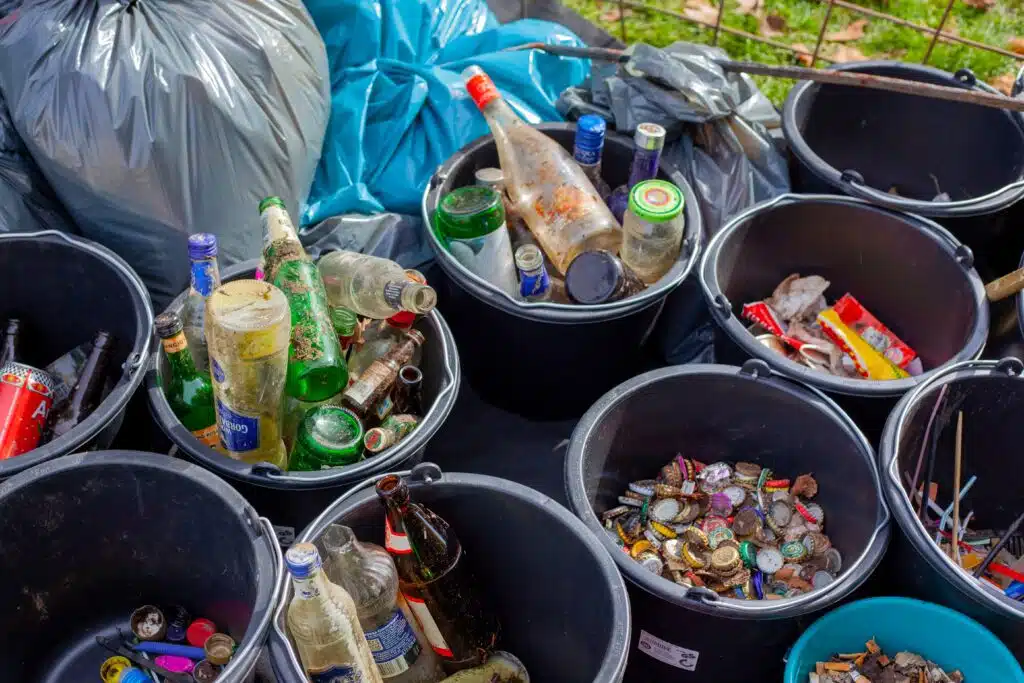Upcycling brings the saying “one man’s trash is another man’s treasure” to life.
“Upcycle” is a term you’re likely to hear from that one extremely eco-friendly person in your life (in between them discussing carbon footprints and showing off their new biodegradable shoes). Yet as common as the word has become, relatively few people can say precisely what upcycling is.
Typically, when you upcycle something, it assumes a completely new function from its original one. So, instead of repairing it and putting it back to use or disposing of it completely, upcycling involves transforming that item into something new.
Some common examples of upcycling include:
- Turning an empty mason jar into a flower vase
- Creating a quilt from old clothes and fabrics
- Utilizing shipping boxes for storage
- Making wall art from wine bottle corks
- Wrapping gifts with old newspapers
- Building furniture and decorations from pallet wood
Upcycling often involves Do-It-Yourself (DIY) projects. For some, upcycling is a fun hobby and creative outlet, while for others, it can become a business by selling their creations online or at local markets and events.
Upcycling vs. Recycling vs. Downcycling It is essential to differentiate upcycling from two similar terms, recycling and downcycling.
All three terms describe what occurs to a product or material at the end of its original lifespan.
Recycling involves sending the product or material into a new lifecycle, serving as an alternative to discarding it in a landfill or as waste. Both upcycling and downcycling are forms of recycling.
Downcycling involves repurposing an item into something of lesser quality or value. For example, many plastic bottles and containers can never be transformed into new plastic containers, but they can be used to construct low-cost benches, decking, etc. Utilizing food waste to create compost is also considered downcycling.
Upcycling a product involves converting it into an object with greater potential value or usefulness. For instance, a quilt made from upcycled t-shirts and textile waste can offer more value from its component materials, and if the t-shirts held personal significance, the process can add a sentimental touch.
Unlike any other recycling process, upcycling usually maintains the original materials’ integrity rather than breaking them down to create new materials. As a result, upcycled items typically retain high quality while providing a unique, creative touch to the final product.
Why Upcycling is Worthwhile Individuals upcycle for various reasons, some for passion and others for business. Nevertheless, upcycling provides several benefits for anyone looking to start.
It’s a fun hobby – At its core, upcycling is a craft, an art, and a hobby. Many people engage in it because they enjoy creating something new from something no longer useful. For those passionate about craftsmanship, upcycling can teach you how to work with different materials like wood, glass, textiles, and metals.
It’s environmentally friendly – Any form of recycling is good for the environment, but upcycling has a more positive impact. Many of the environmental problems we face today result from the fast-paced consumption cycle and the waste it produces. Upcycling enables us to reduce waste, contribute less to landfills, and lower the continuous need for new products.
It saves you money – Upcycling is beneficial for your wallet as well! Some upcycling projects serve
This article originally appeared on Wealth of Geeks.”
 Love For Upcycling
Love For Upcycling

0 Comments